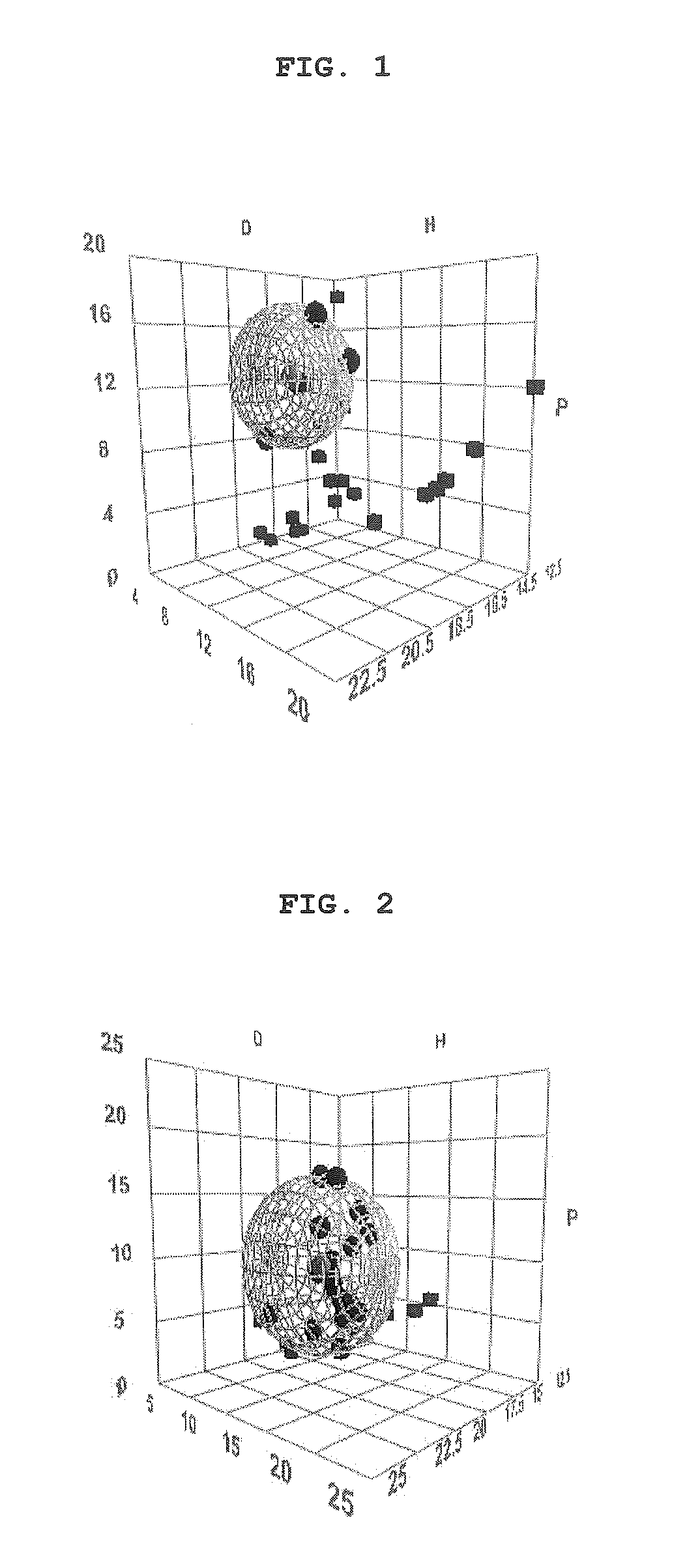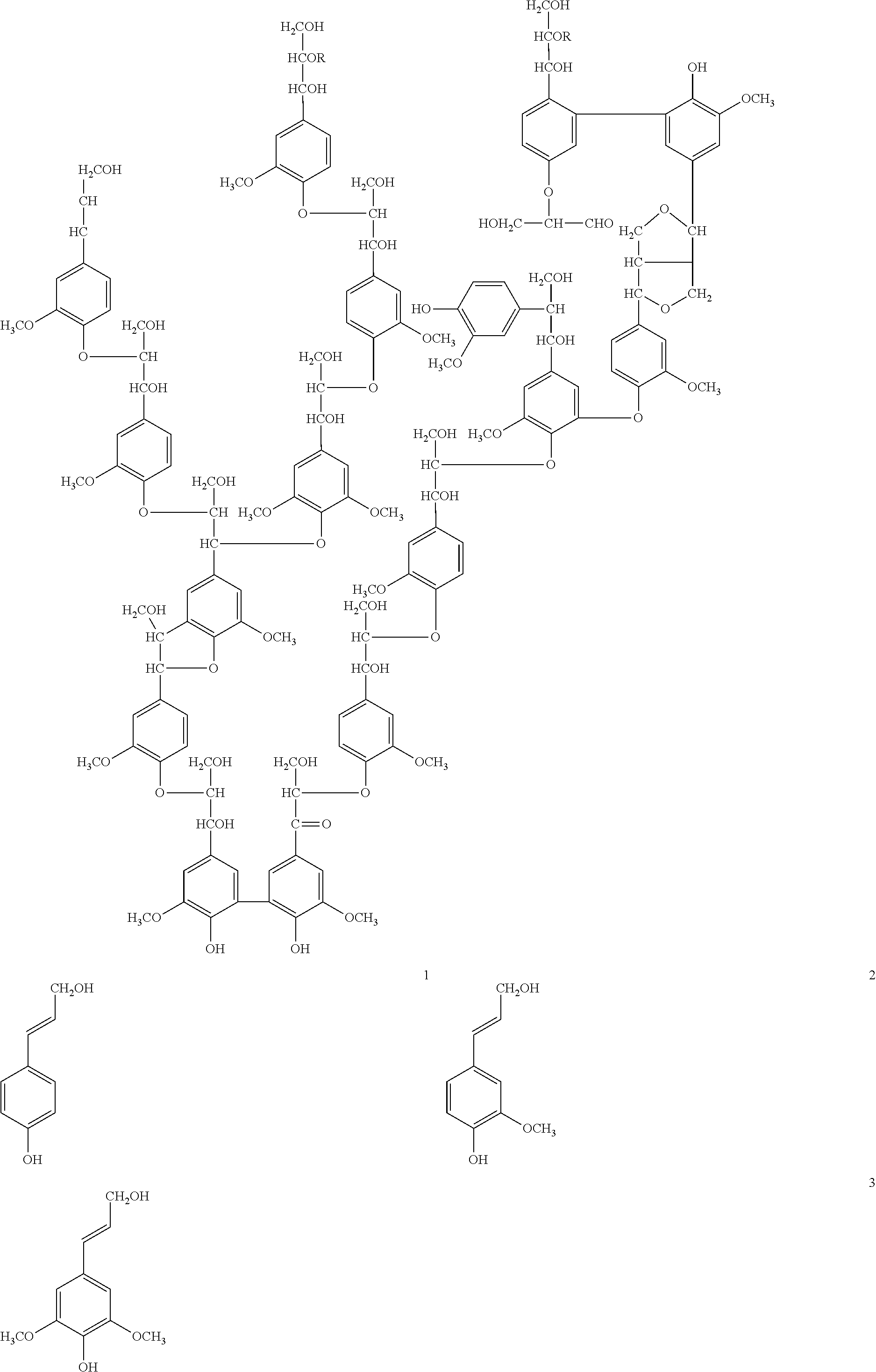Printing ink with nitrated lignin ester as binder component
- Summary
- Abstract
- Description
- Claims
- Application Information
AI Technical Summary
Benefits of technology
Problems solved by technology
Method used
Image
Examples
example 1
Synthesis of Nitrated Lignin Ester
[0076]100 g sulphur-free lignin were suspended in a mixture of butyl acetate (250 ml) and butyric anhydride (140 g). Zinc pellets (20 mesh, 50 g) were added, and the reaction mixture was stirred vigorously. The reaction mixture was heated to reflux conditions at 120° C. under vigorous stirring, and kept under those conditions for 3 h. Thereafter, the reaction mixture was decanted from the zinc and transferred into a beaker, where the reaction mixture was allowed to cool to room temperature (20-25° C.), washed with hexane and dried. Lignin butyrate was obtained as a pure product.
[0077]100 g of the thus obtained lignin butyrate was dissolved in ethyl acetate (250 ml), cooled to 0° C. and stirred vigorously. To said reaction mixture, 50 ml fuming nitric acid (HNO3) were added dropwise. After complete addition of the nitric acid, the reaction mixture was stirred at 0° C. for a further 3 h. Thereafter, the reaction mixture was poured into a beaker, and e...
example 2
[0081]The solubility of nitrated lignin butyrate was compared with the solubility of the lignin starting material (Protobind™ 2400). The evaluation was performed by comparing Hansen solubility parameters. Hansen solubility parameters and their determination are known in the art (e.g. C. Hansen (ed.), Hansen Solubility parameters—A user's guide, CRC Press, Boca Raton, 2nd ed. 2007, in particular chapter I, the respective content is incoporated herein by reference). Hansen solubility parameters were estimated by the solubility of each lignin in 25 solvents, listed in Table 1. The solubility was scored as “1” for completely soluble, “2” for partially soluble, and “3” for insoluble. The solubilities were the input for the Hansen Solubility Parameter in Practice software (http: / / hansen-solubility.com / index.html) which computed a Hansen solubility sphere for each lignin.
TABLE 1SolventδDδPδHAcetic Anhydride16.011.710.2Acetone15.510.47.0Acetonitrile15.318.06.11-Butanol16.05.715.8Butyl Aceta...
example 3
Preparation of Ink Base
[0084]An ink was prepared as follows: The components given in tables 2 and 3 below were mixed with each other together with conventional grinding aids in a bucket. If necessary, the size of the pigment was reduced by stirring the mixture for about 10 minutes. Subsequently, the mixture was put into a mill and ground until no further improvement of the gloss (as determined with a microgloss 60° from BYK-Gardner) of the mixture could be observed.
TABLE 2Example 2aExam-Exam-(Comparative)ple 2bple 2cnitrocellulose varnish (35% solids 22 g20.9 g17.6 gin 25% n-propanol, 15% isopropanol,25% butyl acetate)nitrolignin butyrate varnish (35% 1.1 g 4.4 gsolids in 40% n-propanol, 25% butylacetate)n-propanol35.8 g35.8 g35.8 gbutyl acetate16.2 g16.2 g16.2 gred 57:1 pigment 26 g 26 g 26 g
TABLE 3Example 3a(Comparative)Example 3bExample 3cExample 3dnitrocellulose varnish (35% solids 20 g 18 g 14 gin 25% n-propanol, 15% isopropanol,25% butyl acetate)nitrolignin butyrate var...
PUM
| Property | Measurement | Unit |
|---|---|---|
| Fraction | aaaaa | aaaaa |
| Fraction | aaaaa | aaaaa |
| Fraction | aaaaa | aaaaa |
Abstract
Description
Claims
Application Information
 Login to View More
Login to View More - R&D
- Intellectual Property
- Life Sciences
- Materials
- Tech Scout
- Unparalleled Data Quality
- Higher Quality Content
- 60% Fewer Hallucinations
Browse by: Latest US Patents, China's latest patents, Technical Efficacy Thesaurus, Application Domain, Technology Topic, Popular Technical Reports.
© 2025 PatSnap. All rights reserved.Legal|Privacy policy|Modern Slavery Act Transparency Statement|Sitemap|About US| Contact US: help@patsnap.com


